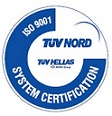Hand hygiene compliance among HCWs, hospital visitors problematic in Greek hospitals
Recent data show that two pediatric hospitals in Greece had low rates of hand hygiene, supporting the notion that health care-associated infection rates in Greece are among the highest in Europe.
Hand hygiene is a significant and timely issue in Greece. The economic crisis has increased financial burden of public hospitals, which has led to understaffing, lack of supplies, increased admissions, and crowding, according to Sofia Kouni, MD, MSc, of the University of Athens School of Medicine, Athens, Greece, and colleagues.
The researchers observed health care worker (HCW) and visitor compliance with hand hygiene at two of the largest pediatric hospitals in Athens, Greece. These hospitals account for about two-thirds of pediatric tertiary care admissions in the country. Data was collected from 13 wards in the two hospitals, including medical, surgical, oncology, transplant, ICUs and EDs between October 2012 and January 2013. Observations were collected during morning, noon and afternoon shifts in each ward.
Researchers observed 1,271 hand hygiene opportunities during the study period; 944 from HCWs and 327 from visitors and parents. Appropriate hand hygiene was conducted in 19% of opportunities. Within the two hospitals, hand hygiene compliance was observed 33% of the time.
The most common hand hygiene opportunities for HCWs occurred after child contact (n=269); before child contact (n=267); and after contact with a child’s surroundings (n=264). Hand hygiene was attempted for 37.6% (355 of 944) of HCWs’ opportunities. Appropriate hand hygiene rates for HCW was 22.6%. HCWs were most likely to comply with hand hygiene after contact with bodily fluids (68.5%; 37 of 54 opportunities)
Nurses had higher overall compliance compared with physicians (49% vs. 24%). No difference was found between physicians and nurses compliance with hand hygiene before aseptic procedures.
HCWs had lower rates of hand hygiene compliance in the morning (22.1%) compared with noon (45.7%) and afternoon (43.2%) shifts. Similarly, hand hygiene compliance varied by ward. HCWs’ compliance was highest in ICUs and transplant units, 64% and 87%, respectively. Lower rates (14.7% to 25.7%) were observed in other units.
Soap and water was the most common method of hand hygiene attempts; 72.6% of physicians and 78.6% of nurses employed this method. Alcohol-based hand rub was the most common hand hygiene method in surgical wards (70.6%) compared with other wards where alcohol-based hand rub use ranged from 10.7% in the neonatal ICUs and 30.8% in EDs.
HCWs used appropriate hand hygiene 60.7% of the time. Improper drying was observed in 48 of 138 (34.8%) attempts; improper cleansing was observed in 15 (10.9%) attempts; and improper drying and cleansing was observed in 78 (54.3%) attempts. The soap-and-water method was more likely to result in appropriate hand hygiene compared with alcohol-based hand rub (64.6% and 47.5%, respectively).
Visitor hand hygiene compliance was very low (19%), which the researchers said indicates the issue of hand hygiene is not well known among the public. Awareness of hand hygiene is important should be increased because visitors and
parents have direct contact with patients and hand touching sites and can transmit pathogens to and between patients.
“We documented disappointing levels of [hand hygiene] and identify an urgent need for interventions. Future activities in this field will include: perpetual monitoring of hand hygiene practices in these 13 units and feedback of hand hygiene compliance data; training and education of HCWs on [alcohol-based hand rub] use and appropriate methods of hand hygiene; and putting reminders of [hand hygiene] in the workplace of the two hospitals. Finally, we suspect that additional qualitative research will help us to develop other targeted interventions in the future,” the researchers concluded.
Disclosure: The researchers report no relevant financial disclosures.





